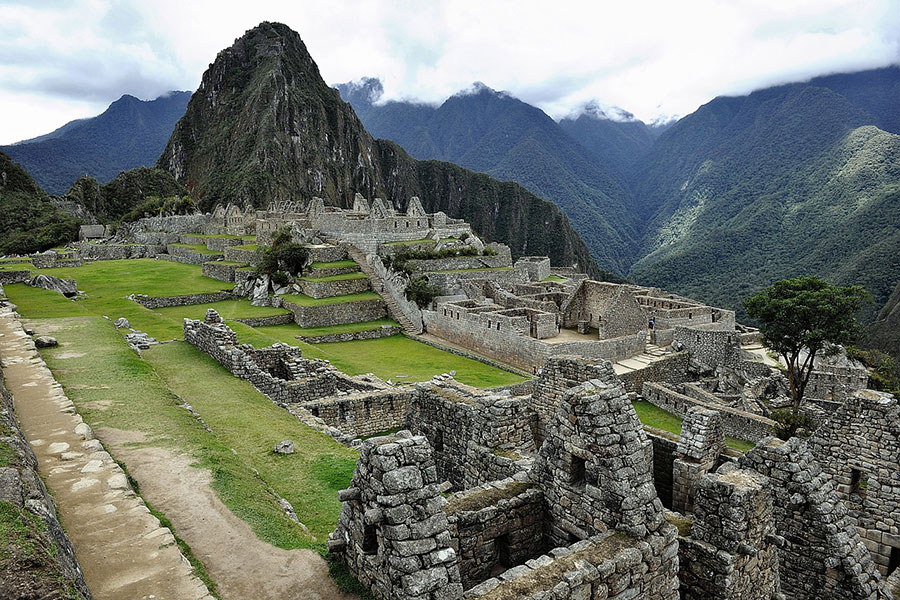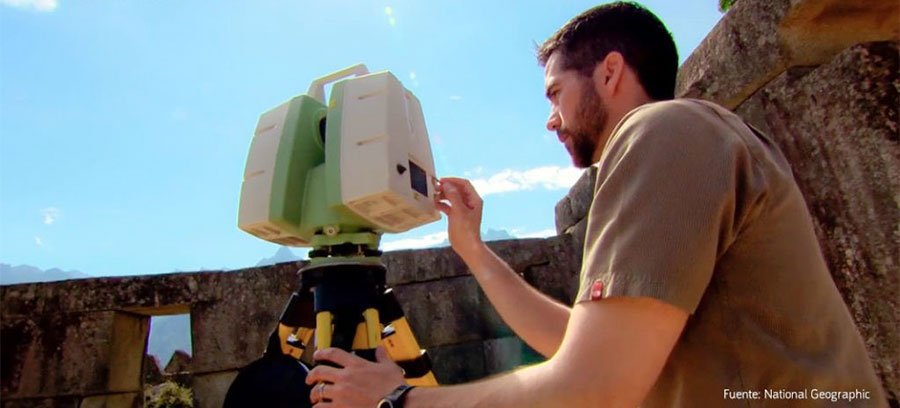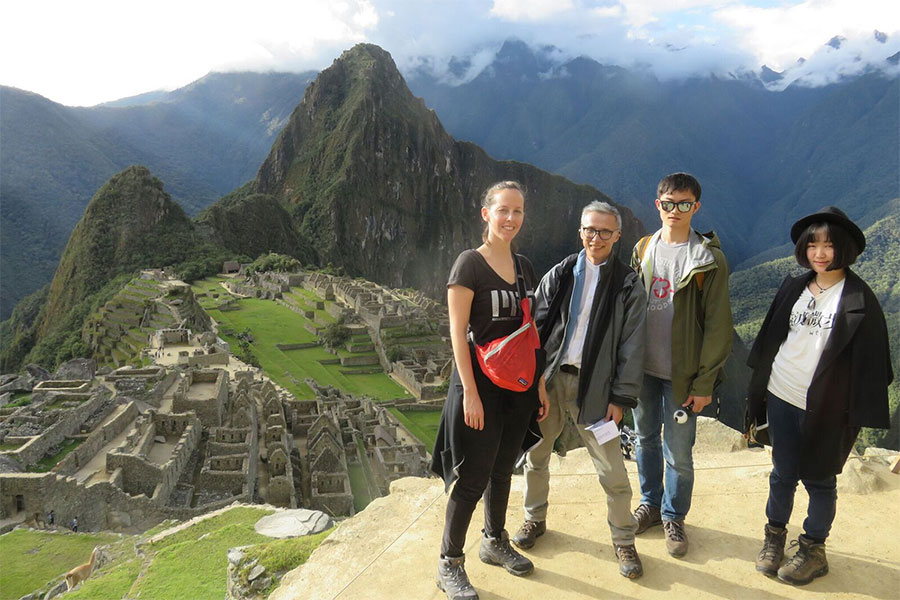This article was posted on Saturday, October 27th, 2018 at 2:56 pm and is filed under Cusco Tours, Peru in the World.

At the top of the Peruvian Andes there is an ancient city called Machu Picchu it is a sanctuary that defies all kinds of explanation. This beautiful citadel is located at 2450 meters above sea level, it is a subtropical zone, between the Andes and the Amazon jungle of Peru, 112 kilometers north of Cusco, the Inca capital.
Machu Picchu is a mysterious and remote wonder along the mountain, there are more than 200 structures, each one cast in carved rock, some seem to be houses and other temples, they surround half an hectare of green area and they all get running water at its fountains, it is a lost city whose doors and passageways indicate the ghost of its past, a place that is beautiful and disconcerting at the same time.
108 years have passed since its discovery and the historic sanctuary continues to arouse fascination and interest in the history of the extraordinary technologies developed by the Incas. With the desire to continue investigating, a team from the laboratory of the Department of Architecture of the Massachusetts Institute of Technology (MIT) is leading the MISTI project.
THE EXPERIENCE OF MACHU PICCHU DIGITAL
The Massachusetts Institute of Technology (MIT) is one of the best universities in the world and will be responsible for leading the MISTI Global Seed Fund Machu Picchu Design Heritage project, which will DIGITALLY DOCUMENT the archaeological complex. It will be a new experience of the digital Machu Picchu.
Machu Picchu is one of the most recognizable icons of archaeological and adventure tourism in the world. However for the Peruvian people and for the international scientific community, Machu Picchu is much more than a tourist destination. In addition to being a World Heritage site of the United Nations Organization for Education, Science and Culture (UNESCO).
The first attempts to document this magnificent citadel date back to the late nineteenth century, when Peruvian and foreign explorers roamed around the meandering Rio Urubamba. Some did not hesitate to register their visit to the rock.
Such is the case of Agustín Lizárraga, a farmer who accompanied the expedition and who would have known the citadel 9 years before its discovery. On a wall of the temple of the three windows he recorded “July 14, 1902”, but who widely document the site was the professor of the University of Yale Hiram Bingham in his expedition in 1911.

LEADERS OF THE MISTI PROJECT
The project is led by Professor Takehiko Nagakura who is an architect from Tokyo, and PhD student Paloma Gonzales. They belong to the Representation and Architecture Computing Group, which uses last generation instruments and will develop a 3D map with virtual reality and augmented reality technologies.
This project began in 2016, two trips were made to the citadel one in mid-2017 and another to the beginning of 2018. 9000 images were captured using panoramic cameras, photogrammetric scanning tools and drones. The PhD student highlights the great work done by MIT and the University of San Antonio de Abad in Cusco.
The team developed three-dimensional models to create virtual reality experiences that allow people to visit Machu Picchu from anywhere in the world.

The MIT Team
From right to left Paloma Gonzalez, Professor Takehiko Nagakura, Chang Liu and Wenzhe Peng pose with a panoramic view of Machu Picchu in Peru.
#MachuPicchuDitalizado, #RiquezasdelPerú, #UNESCO, #MistiProject, #MIT, #MisteriousMachuPicchu, #MachuPicchuTridimensional, #DigitizedSanctuary, #IncaArchitecture, #ComplejoTuristico, #ElPeruenTresD, #LosArquitectosdelMachuPicchu, #AventurayMajestuosidadPeru, #PeruCapitalInca, #LoMejordelPeru
Source: Salaarquitectos.com, News.mit.edu, Architecture.mit.edu, Misti.mit.edu, Xataka.com, ElPais.com, ElMundo.es, bbc.com, National Geographic.







